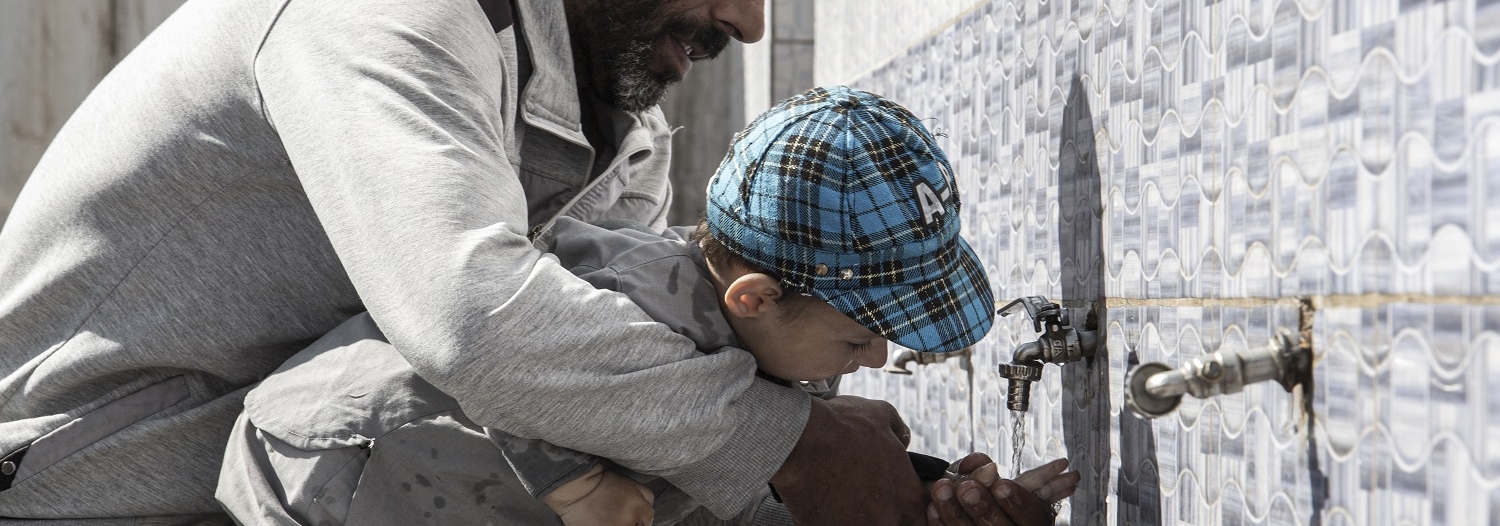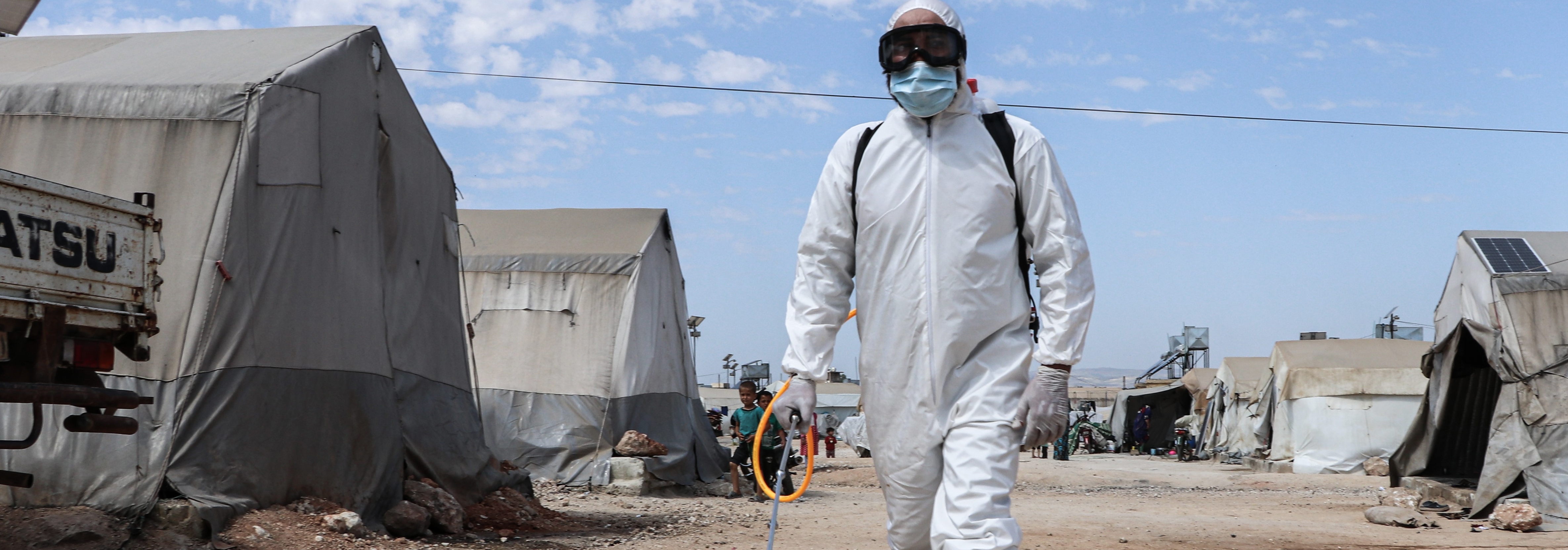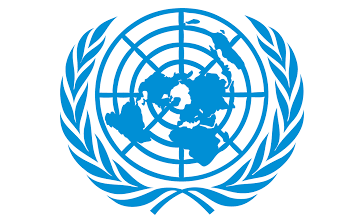IOM Vision
Building on IOM's expertise in providing life-saving assistance to those most affected by conflict, and recognizing the dynamic context within Syria, IOM will address humanitarian and protection needs and support efforts towards resolving displacement. IOM mainstreams protection, accountability to affected populations, protection from sexual exploitation and abuse (PSEA) and risk mitigation throughout all its interventions while working closely with and strengthening the capacity of NGO partners.
Objective
Saving lives and protecting people on the move
Internally displaced persons and affected communities in NWS who will be selected based on assessed vulnerabilities. Vulnerability criteria will ensure that assistance reaches individuals and households with greatest need, including newly-displaced, female- and child-headed households, and persons living with disabilities. Planning, prioritization and targeting with be based on the Humanitarian Needs Overview, and the sectoral severity ranking.
|
In order to meet the shelter and non-food item needs of affected populations in NWS, IOM will:
|
|
As part of IOM's Camp Coordination and Camp Management activities in NWS, IOM will:
|
|
In order to address the water, sanitation and hygiene (WASH) needs of affected populations in NWS, IOM will:
|
|
In order to address the significant protection needs of affected populations in NWS, IOM will:
|
In order to address the immediate food needs of affected populations in NWS, IOM will:
- Provide monthly food baskets to the most vulnerable households;
- Provide ready-to-eat rations for newly-displaced households;
- Provide monthly assistance through cash-for-food interventions for food-insecure persons; and
- Provide one-off short-term food assistance through cash as an emergency response for crisis-affected vulnerable people.
In order to support the health needs of affected populations in NWS and reduce the spread of COVID-19 in supported displacement sites, IOM will:
- Support health facilities identified by the Health cluster by offering comprehensive primary health packages and facilitating referrals to higher levels of care;
- Increase COVID-19 testing capacity in NWS through the provision of new PCR testing machines operated through partners inside Syria in coordination with WHO;
- Scale-up basic health and COVID-19 screenings in displacement camps throughout NWS;
- Support the gap in Tuberculosis (TB) management through screenings in NWS, mobile clinics with chest X-Ray and sputum sample collection cabinets, and provision of diagnostic systems;
- Provide nutrition support to TB patients in NWS through 1,500+ food baskets in the first half of 2021;
- Provide short-term isolation tents for individual suspected cases of COVID-19 in IOM-supported displacement sites;
- Identify and train community health focal points on COVID-19 awareness, surveillance, and referral pathways as well as awareness-raising sessions on health and hygiene promotion;
- Distribute PPE for health care providers and humanitarian responders;
- Provide support to Point of Entry (POE) health screening and monitoring activities; and
- Support the rolling out of COVID-19 vaccination campaigns through training networks of community health volunteers on risk communication and community engagement (RCCE) to counter vaccine hesitance.

Objective
Driving solutions to displacement
Internally displaced persons and affected communities in NWS will be selected based on assessed vulnerabilities. Vulnerability criteria will ensure that assistance reaches individuals and households with particular vulnerabilities, including newly-displaced, female- and child-headed households, and persons living with disabilities. Planning, prioritization and targeting with be based on the Humanitarian Needs Overview, and the sectoral and inter-sectoral severity ranking
In order to promote durable solutions for affected populations in NWS, IOM will:
- Support early recovery and livelihoods through business development support to small and medium enterprises, vocational and agricultural trainings;
- Support increasing income generation for vulnerable households through cash for work opportunities including sanitization of public facilities (markets, parks, streets, mosques) and private facilities (warehouses, barbershops, distribution areas);
- Enhance inclusive community participation and social cohesion through community engagement and improved equitable access to basic services; and
- Support the enhancement of small and medium enterprises (SMEs) for COVID-19 PPE and hygienic item production inside Syria.
These interventions fall under IOM's Progressive Resolution of Displacement Situations Framework (PRDS). The PRDS recognizes that the attainment of durable solutions is rarely a linear process, and therefore support to crisis-affected communities must remain adaptable, catering to persisting needs amidst placement while supporting individual and communal recovery efforts.
Objective
Contribute to an evidence-based and efficient crisis response system
Humanitarian actors participating in the inter-agency PSEA Networks in all hubs for joint implementation of international PSEA commitments, as well as those contributing to the protection of civilians, the reduction of suffering and to building the resilience of affected populations throughout the Syria Response will benefit from the provision of technical and operational information management support.
IOM will increase the technical and organizational capacity of I/NGO partners in NWS by hosting trainings, coaching sessions, webinars, and learning exchanges in key areas such as:
- Procurement and logistics;
- Project Cycle Management;
- Finance;
- Cash programming.
IOM will continue to provide WoS information management support for the humanitarian community, and will continue to host the WoS PSEA program and support the interagency humanitarian response in joint implementation of PSEA commitments. Through an established, robust interagency PSEA Network, IOM will continue to support the inter-agency partnership to decrease the risk of crisis‐affected communities experiencing incidents of SEA by humanitarian workers and provide technical and operational support to humanitarian actors to prevent, prepare for, and respond to SEA cases. Activities will include:
- Coordination between the interagency PSEA Networks in all hubs, as well as between PSEA Networks and GBV actors to ensure a survivor-centred approach and systematic referrals to available services;
- Capacity building of humanitarian workers and other stakeholders on PSEA, including investigatory capacity building;
- Awareness raising and consultations with affected populations;
- Support implementation of risk and mitigation measures;
- Integration and mainstreaming of PSEA into the broader humanitarian infrastructure and linking to existing referral pathways;
- Inter-agency community-based complaints mechanisms (CBCMs).
Syrian Arab Republic
The map used here is for illustration purposes only. Names and boundaries do not imply official endorsement or acceptance by IOM.
Figures are as of 31 December 2023. For more details of IOM's operational capacity in country, please see the IOM Capacity section.
















